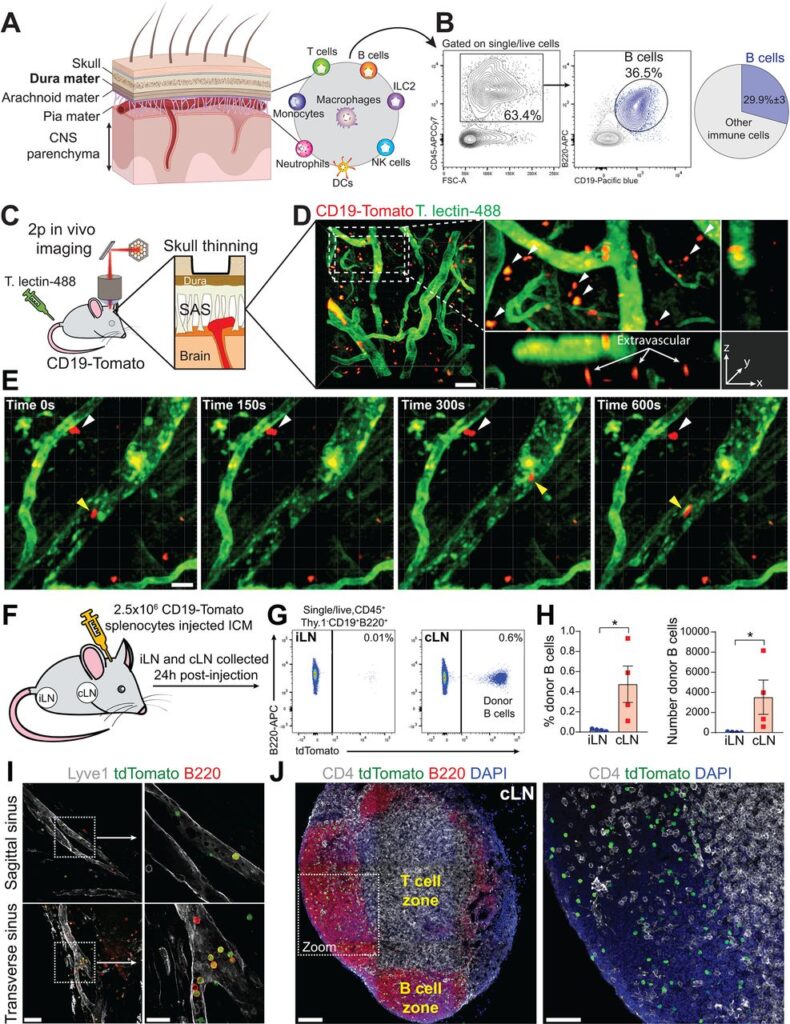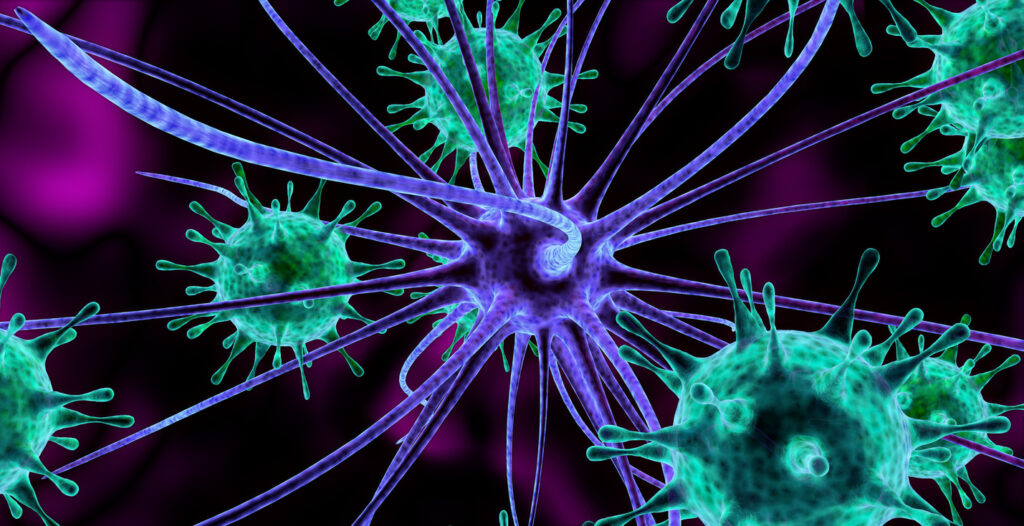Heterogeneity of meningeal B cells reveals a lymphopoietic niche at the CNS borders (髄膜のB細胞の異質性は、中枢神経系の境界におけるリンパ球生成のニッチを明らかにする)
Simone Brioschi1,†,Wei-Le Wang1,†, Vincent Peng1,†, Meng Wang2, Irina Shchukina1,Jonathan Kipnis1, Virginia S. Shapiro10, Gregory F. Wu11, Marco Colonna1,* et al.
1Department of Pathology and Immunology, Washington University School of Medicine, Saint Louis, MO 63110, USA.
2Interdepartmental Program in Computational Biology and Bioinformatics, Yale University, New Haven, CT 06511, USA.
3Department of Pediatrics, Washington University School of Medicine, Saint Louis, MO 63110, USA.
4Department of Microbiology and Immunology, Stanford University School of Medicine, Stanford, CA 94305, USA.
5Department of Molecular Microbiology, Center for Infectious Disease Research, Washington University School of Medicine, Saint Louis, MO 63110, USA.
6Washington University Center for Cellular Imaging, Washington University School of Medicine, Saint Louis, MO 63110, USA.
7Departments of Cell Biology and Physiology and Neuroscience, Washington University School of Medicine, Saint Louis, MO 63110, USA.
8Department of Biomedical Engineering, Washington University in Saint Louis, Saint Louis, MO 63130, USA.
9McDonnell Genome Institute, Washington University School of Medicine, Saint Louis, MO 63110, USA.
10Department of Immunology, Mayo Clinic, Rochester, MN 55905, USA.
11Department of Neurology, Washington University in Saint Louis, Saint Louis, MO 63110, USA.
12Department of Pathology, Yale School of Medicine, New Haven, CT 06520, USA.
↵*Corresponding author. Email: mcolonna@wustl.edu
Science 03 Jun 2021: eabf9277 DOI: 10.1126/science.abf9277
Abstract
The meninges contain adaptive immune cells that provide immunosurveillance of the CNS. These cells are thought to derive from the systemic circulation. Through single-cell analyses, confocal imaging, bone marrow chimeras, and parabiosis experiments, we show that meningeal B cells derive locally from the calvaria, which harbors a bone marrow niche for hematopoiesis. B cells reach the meninges from the calvaria through specialized vascular connections. This calvarial–meningeal path of B cell development may provide the CNS with a constant supply of B cells educated by CNS antigens. Conversely, we show that a subset of antigen-experienced B cells that populate the meninges in aging mice are blood-borne. These results identify a private source for meningeal B cells. which may help maintain immune privilege within the CNS.
髄膜*には、CNS の免疫監視を提供する適応免疫細胞が含まれている。 これらの細胞は、全身循環に由来すると考えられている。 単一細胞分析、共焦点イメージング、骨髄キメラ、および傍生物実験(外科的に結合された2つの生物を組み合わせて、単一の共有生理学的システムにする)を通じて、我々は、髄膜 B 細胞が、造血のための骨髄ニッチを持つ頭蓋冠から局所的に派生することを示しています。 B 細胞は、特殊な血管を通じて頭蓋冠から髄膜に到達します。 B 細胞発生のこの頭蓋冠 – 髄膜経路は、中枢神経系(CNS)抗原によって教育された B 細胞をコンスタントに CNS に提供する可能性があります。 さらに私たちは老化したマウスの髄膜に存在する抗原を経験した B 細胞のサブセットが血液由来であることを示す。 これらの結果は、髄膜 B 細胞の提供源を同定し、CNS 内で免疫特権を維持するのに役立つ可能性がある。
*髄膜(ずいまく)は、頭蓋骨と脳の間に存在し、脳を包み込んで保護している膜を指す。髄膜は3枚の膜(脳に近い方から軟膜、くも膜、硬膜の3層)から成り立っている。軟膜は脳表面に貼りついている。
*抗体を産生するB細胞は免疫系の中では間接攻撃の役割を担っており、その働きは液性免疫とも呼ばれる。B細胞は細胞ごとに産生する抗体の種類が決まっている。自分の抗体タイプに見合った病原体が出現した場合にのみ活性化して抗体産生を開始することになる。
*責任著者のMarco Colonna, MDは、ワシントン大学医学部の教授(Robert Rock Belliveau Professor of Pathology and Immunology)である。
*本学医学群医学類の解剖実習では、脊髄で髄膜を観察することができる。頭蓋では硬膜のみが観察できる。脳の軟膜とクモ膜は神経解剖実習で観察できる。

